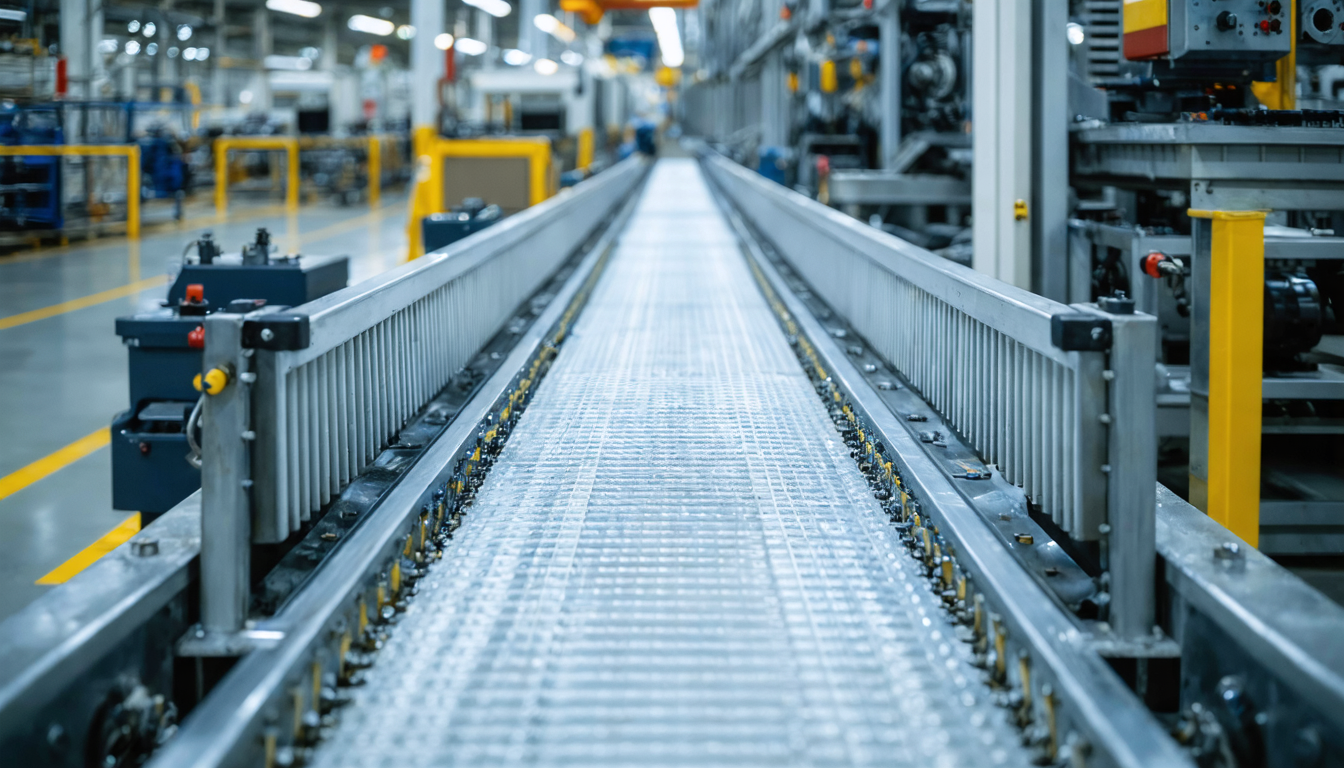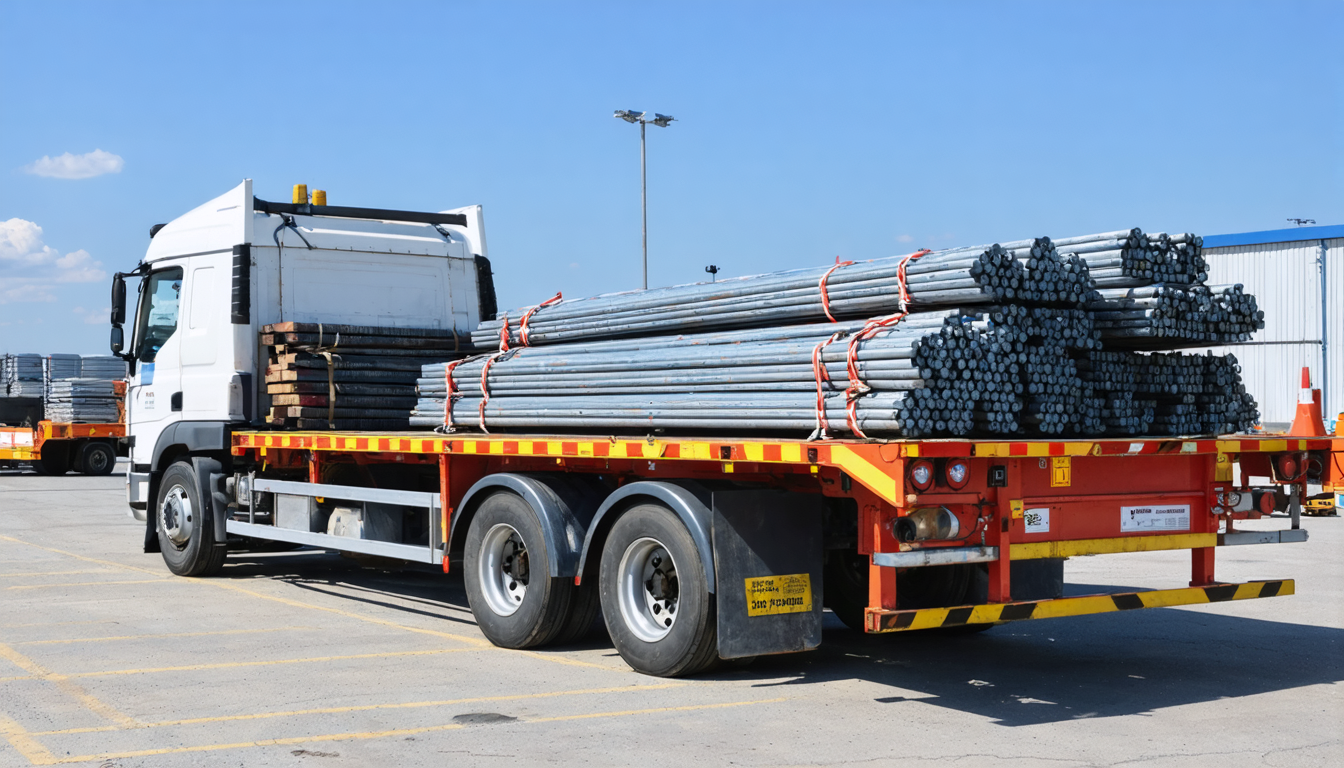Each year, contact injuries—those “struck-by” or “caught-between” machines, or vehicles—cause thousands of serious incidents on the factory floor. These accidents represent one of the costliest and most disruptive safety roadblocks in manufacturing, leading to billions of dollars in direct losses each year. The risk is everywhere: from machinery without proper guarding, to forklifts zipping through shared aisles, to tools left unsecured on overhead platforms.
But here’s the good news: most of these incidents can be mitigated. By pairing strong safety protocols with modern, AI-powered video AI, safety leaders can move from reacting after the fact to addressing risks before they lead to accidents. This guide breaks down the costs, root causes, and gives you a framework for moving from a reactive to a forward-looking safety model.
Why contact injuries hurt manufacturing operations (and budgets)
Contact injuries—where a worker is struck by moving equipment, or caught between machinery—are among the top drivers of injury costs and operational headaches in manufacturing. Manufacturing consistently records one of the highest rates of non-fatal injuries among all private industries, with hundreds of thousands of incidents reported annually.
Beyond the numbers, these accidents often mean missed deadlines, overtime, and regulatory penalties. With the maximum OSHA penalty for a single serious violation now exceeding $16,000, the financial incentive for mitigating risk is clear (Source: OSHA).
The top causes of struck-by or caught-between accidents in manufacturing—and how to mitigate them
Understanding the “why” behind each incident is the first step. Here are the leading causes, with practical risk mitigation strategies and how video AI can make your safety program more effective.
1. Unprotected or poorly maintained machinery

The Hazard:
A machine operator is clearing a jam on a conveyor. The moving parts are unguarded, and as the operator reaches in, their glove snags—a classic caught-in accident. These incidents account for thousands of manufacturing injuries each year, often resulting in finger or hand amputations.
Traditional Mitigation:
Install and regularly inspect physical machine guards.
Use lockout/tagout (LOTO) procedures during maintenance.
Conduct manual checks to ensure guards are in place before operations.
How Video AI Enhances Safety:
Video AI can monitor machinery zones, flagging when safety guards are missing or when workers access hazardous areas without proper lockout/tagout. With these notifications, safety teams can intervene before an incident becomes a serious injury, moving beyond a reliance on post-incident reports or occasional spot checks.
2. Inadequate lockout/tagout (LOTO) during maintenance
The Hazard:
A maintenance tech starts cleaning a press, unaware that another employee re-energized the machine. The result: a caught-between incident. LOTO violations are among the most common root causes of serious injuries during equipment servicing.
Traditional Mitigation:
Implement written lockout/tagout procedures and require LOTO certification (Source: OSHA).
Use manual checklists and permit systems for maintenance tasks.
Conduct periodic LOTO audits and retraining.
How Video AI Enhances Safety:
Video AI can alert your team whenever someone enters a no-go zone during scheduled maintenance windows or is missing required PPE when accessing machinery. Reviewing flagged footage helps EHS leaders pinpoint policy gaps, verify LOTO compliance, and deliver targeted coaching to reduce repeat violations.
3. Unsafe material handling and stacking

The Hazard:
A rigger is unstrapping a load of steel rods on a flatbed trailer. The rods shift unexpectedly and roll off, striking the worker. Improperly stacked materials, unsecured loads, and risky manual handling are behind a considerable share of struck-by incidents.
Traditional Mitigation:
Require load securing and regular inspection of stacked materials.
Train workers on proper lifting and rigging techniques.
Use signage and barriers to keep people out of hazardous areas during lifts.
How Video AI Enhances Safety:
Video AI can detect when people enter dangerous stacking or rigging zones (“person enters no-go zone”), or when vehicles operate too close to unsecured loads. By surfacing these high-risk moments, safety teams can act quickly to address unsafe practices before they lead to an accident.
4. Missing or improper use of personal protective equipment (PPE)
The Hazard:
A machinist operates a grinder without safety glasses. A fragment flies off, causing a serious eye injury. Inadequate PPE use is a recurring theme in OSHA investigations, especially in environments with flying debris or pinch points (Source: OSHA).
Traditional Mitigation:
Post PPE requirement signage and provide necessary gear.
Conduct manual PPE spot checks and enforce discipline.
Include PPE training in onboarding and refreshers.
How Video AI Enhances Safety:
Video AI can automatically flag workers missing required PPE—such as hard hats or safety vests—when entering or working in hazardous zones. Timely feedback gives supervisors a chance to intervene, while historic footage helps identify patterns or gaps in training.
Integrating a video AI system: from NVR to analytical insights in manufacturing
Upgrading your safety technology does not have to mean replacing your entire system. Video AI platforms are built to work with your existing infrastructure—including standard POE (Power over Ethernet) cameras—so you can add advanced analytics without an expensive rip-and-replace.
Feature | Traditional NVR System | Video AI Platform |
|---|---|---|
Camera Compatibility | Typically compatible with specific camera models | Works with existing POE cameras |
Storage | On-premises hardware | Secure, cloud-native, scalable |
Maintenance | Requires on-site maintenance | Minimal, remote updates |
User Access | Limited seats | Unlimited users, one dashboard |
Video Review | Manual footage review | AI-powered, fast search |
Actionable Insights | Reactive footage review | Automated safety alerts |
Video AI platforms bridge your legacy cameras to a secure, cloud-native dashboard, adding an analytical layer on top of your current video feeds. This means you get real-time alerts for events like “missing PPE,” so you can respond preemptively—not just review footage after an incident.
Tips for Manufacturing Safety Teams:
Choose solutions that support existing safety goals and compliance with OSHA 29 CFR 1910.212 (machine guarding) and 1910.147 (LOTO).
Ensure compatibility with your current camera infrastructure—look for platforms that accept both new and legacy feeds.
Prioritize systems that offer timely insights and unlimited user access, so safety isn’t siloed.
Integrate new technology with your broader safety program—link incident reporting, training, and regular safety audits for a holistic approach.
Cut contact injuries—strengthen your safety culture
Each contact injury is an opportunity for improvement. Today’s manufacturing leaders have more tools than ever to reduce the likelihood of struck-by and caught-between incidents by combining strong protocols, hands-on training, and video AI that delivers prompt, specific notifications.
Want to see how video AI can help your safety team reduce contact injuries and improve response times? Request a Spot AI demo to experience the platform in action.
Frequently asked questions
What are the main causes of contact injuries in manufacturing?
The leading causes are unguarded or poorly maintained machinery, missing or inadequate lockout/tagout during maintenance, unsafe material handling and stacking, and missing or improper use of PPE. Each of these hazards is well-documented in manufacturing injury reports.
How can manufacturing organizations implement safety technology without disrupting operations?
Video AI platforms connect directly to your existing cameras, overlaying powerful analytics without interrupting production. These systems automate hazard detection and incident reporting, making safety teams more effective without changing workflows.
Are there compliance standards for mitigating contact injuries in manufacturing?
Yes. OSHA 29 CFR 1910.212 requires machine guarding on hazardous moving parts, and 1910.147 mandates comprehensive lockout/tagout procedures for equipment servicing. Regular audits and safety training are essential for compliance.
What to consider before adopting video AI technology in my facility?
Start with a risk assessment to identify high-hazard zones and evaluate your current camera coverage. Involve safety, operations, and IT teams early. Pilot the system in a problem area, review results, and expand based on data-driven improvements.
How does video AI help with incident investigations?
Video AI platforms automatically flag safety violations like entries into no-go zones, making it easy to find relevant footage of incidents and understand their root causes. This supports faster, more accurate investigations and helps teams update protocols to reduce the likelihood of future incidents.
How does video AI technology empower safety teams?
Video AI automates hazard detection and reporting, freeing safety leaders from time-consuming manual video review and paperwork. This means they can focus on insight-driven planning, training, and supporting their teams.
About the author
Joshua Foster is an IT Systems Engineer at Spot AI, where he focuses on designing and securing scalable enterprise networks, managing cloud-integrated infrastructure, and automating system workflows to enhance operational efficiency. He is passionate about cross-functional collaboration and takes pride in delivering robust technical solutions that empower both the Spot AI team and its customers.

























.png)
.png)
.png)